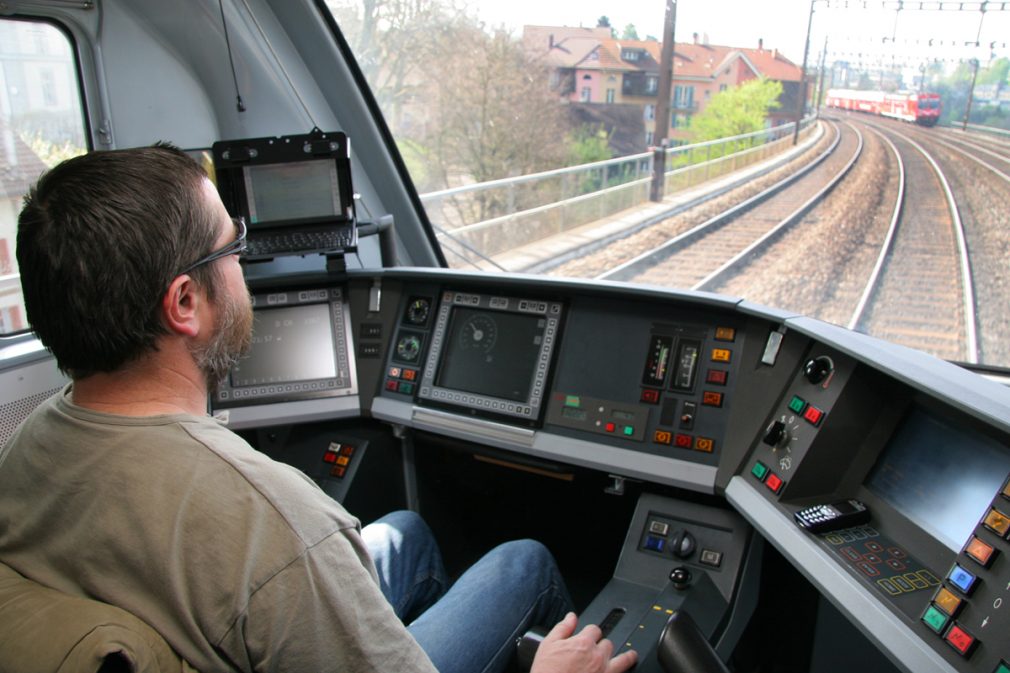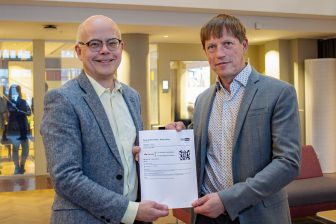
ProRail: attention for the total life cycle of ERTMS
For modern rail safety systems, functionality must have priority over technology, according to Henri van Houten, manager of ProRail’s ERTMS Expert Group, on the eve of large-scale construction works for the new European safety system ERTMS. “We must no longer stick to technology that works for fifty years, but look at the total life cycle of the ERTMS concept, the added value for the rail sector and the people that work in it.”
On 28 March 2017, Henri van Houten, together with Karel van Gils, Director of Asset Management at ProRail, will give a presentation about the challenges ERTMS poses for the Netherlands during the ERTMS conference at RailTech Europe. ERTMS (European Rail Traffic Management System) is the new European rail safety system that will be rolled out in various European member states in the coming years.
We are doing away with technology we have had for fifty years
“The majority of train safety installations consist of technology that is over fifty years old. There is nothing wrong with that, but the installations have reached the end of their technological lifespan and need to be replaced in the coming years. At the same time, we see that the knowledge of and expertise in the older technology has started to become scarcer. Therefore it is being replaced with modern (computer) technology that offers more functional possibilities and innovates very quickly. This is also true for the technology that will be the basis for ERTMS in the coming decades. It is therefore important that we look at precisely what functionality we want and to facilitate an optimal rail transport system. The users must be placed centrally in this.”
“My proposal is that we need to think about how we can intelligently introduce the technology to achieve our goals and to provide our users with optimum support to realise a good transportation concept. The life cycle of the track safety concept no longer depends on what type of case there is. My proposal is that we need to consider how we can cut systems up. If something needs replacing, we need to replace something intelligent with something else intelligent without having a big impact on everything else.”
“We live in a world in which technology ages quickly. Therefore we need to be sufficiently aware of compatibility between systems and interfaces and not hold on to the notion that the purchased safety technology must last fifty years. That is also true for rolling stock. A modern train is a moving computer. The steel will last for years, but during the lifecycle of the material, the ICT systems will be adjusted and replaced a number of times. To manage this necessitates a good approach. The challenge is not to concern yourself with all the details.”
The ERTMS manufacturers have to assuage users’ worries
The ERTMS manufacturers would do well to reduce users’ concerns about the life cycle of the ERTMS train apparatus, says Van Houten. ERTMS is a set of specifications that are the basis for manufacturers to develop control and safety systems for rail traffic. From these specifications there are different versions, the Baselines. “On the one hand, you see that the technical systems are maturing, which is positive. On the other hand, it is apparent that faults have been made with implementation, even though everything is well set out in the EU’s ERTMS specifications.”
“The manufacturers are not yet good at assuaging their clients’ concerns, and helping them to resolve faults. Microsoft sends Windows users updates, but ERTMS manufacturers have not got into similar habits. They must do so, to allow users to be helped more quickly. At the moment, it simply takes too long to resolve faults.”
Furthermore, there needs to be more focus in the sector on working to improve ERTMS, Van Houten believes. “ERTMS behaves differently to ATB. The ERTMS technology is now good, but if there are small disruptions there is still not enough help and skill to tackle them.”
The Hybrid ERTMS Level 3-version is the most likely option
“The rail sector still faces a number of technological challenges. ERTMS is based on ICT, but the sector finds it difficult to deal with the rapidly changing technology”, says Van Houten. “Updates can also be about error correction”, he continues. “Besides this, there is pressure to move to ERTMS Level 3 as quickly as possible, because its installation and maintenance costs are lower than at other levels. To make this possible, it makes sense to consider Level 3 when installing ERTMS material.” In Van Houten’s eyes, the Hybrid ERTMS Level 3 version that is currently being researched is the most likely option. “It would be nice if we could choose this concept in the Netherlands at a good moment.”
“One of the biggest challenges of the ERTMS programme is that we are going to renovate while the trains are still running. We have never done this on such a scale before.” Alongside the installation of ERTMS, there is the Train Safety Replacement Programme (Programma Vervanging Treinbeveiliging, PVT). As part of the PVT, traditional relay safety systems will be replaced by modern interlocking systems in the coming years. Van Houten states that ProRail is looking for synergies in these programmes. “The train safety apparatus will be renewed to meet the ambitions of the rail sector. The reconstruction must be done in such a way that does not impinge on the passengers or freight services.”
On 28 March, Henri van Houten and Karel van Gils from ProRail will give a presentation during the ERTMS conference in the Jaarbeurs in Utrecht. The three-day conference is part of the international rail expo RailTech Europe. To look at the conference programme, please go to the website: https://www.railtech.com/railtech-2017/conference/




